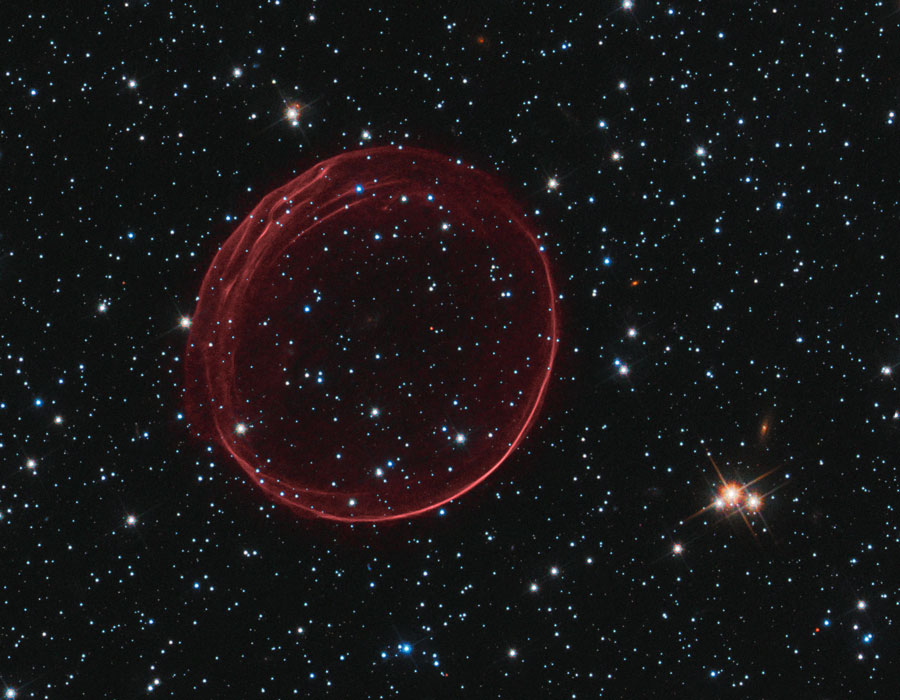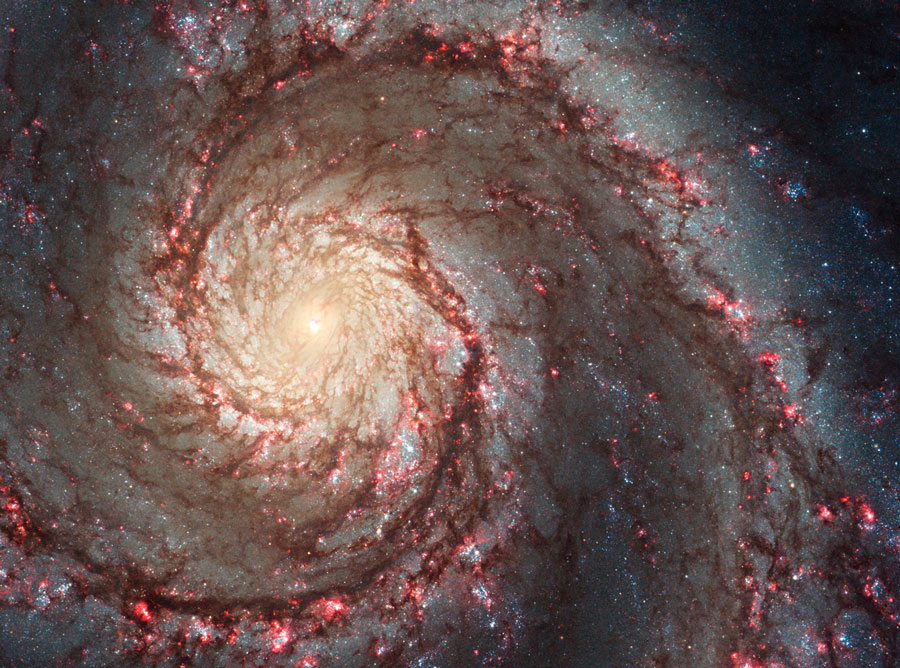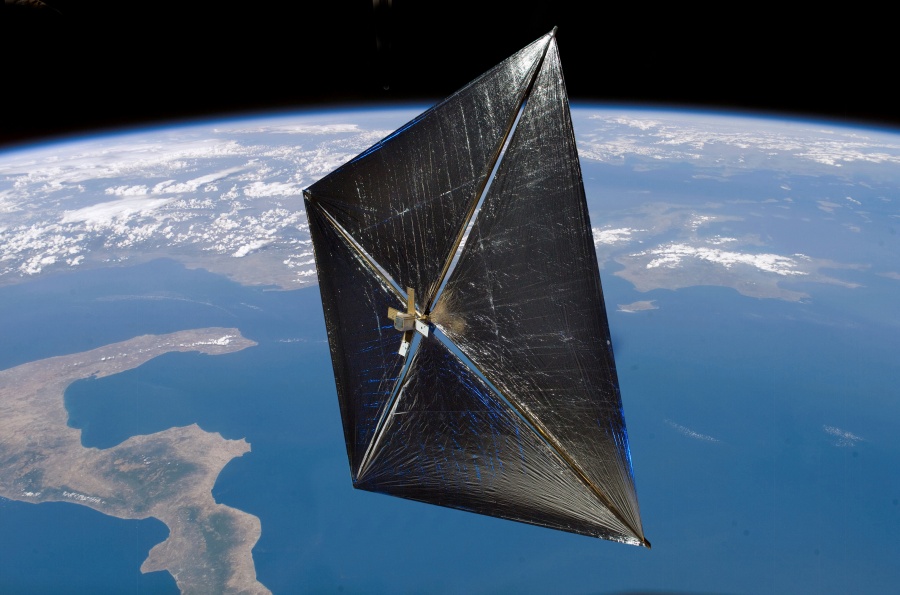Please vote for the TWO best Astronomy Pictures of the Day (image and text) of January 23-29.
(Repeated APODs are not included in the poll.)
All titles are clickable and link to the original APOD page.
We ask for your help in choosing an APOW, as this helps Jerry and Robert create "year in APOD images" review lectures, creates APOM polls that can be used to create a free PDF calendar at year's end, and provides feedback on which images and APODs were relatively well received. You can select two top images for the week.
Thank you!
________________________________________________________________
<- Previous week's poll
[youtube]http://www.youtube.com/watch?v=5S3WfNDD ... r_embedded[/youtube]
The Peekskill meteor of 1992 was captured on 16 independent videos and then struck a car. Documented as brighter than the full Moon, the spectacular fireball crossed parts of several USA states during its 40 seconds of glory before landing in Peekskill, New York. A video of the fireball beyond a high school football game in Johnstown, Pennsylvania, USA, is pictured above. The resulting meteorite is imaged here, and was found to be composed of dense rock and has the size and mass of an extremely heavy bowling ball. If you are lucky enough to find a meteorite just after impact, do not pick it up -- parts of it are likely to be either very hot or very cold. Tracking meteors origins and destinations might be easier in this modern digital age, but many security cameras videos that likely caught a bright fireball are not preserved. If you would like to volunteer to help meteor science by locating images and videos of newly occurring fireballs within 48 hours after they occur, here is a place to sign up.
Where on this moon would you land? The moon pictured above is not Earth's moon but Phobos, the closest moon to the planet Mars. Phobos is so close to Mars that it is expected to break up and crash into the red planet within the next 100 million years. Earlier just this year, however, ESA's Mars Express mission took detailed images of the area surrounding Phobos' South Pole. Visible on the small moon's unusually dark surface are many circular craters, long chains of craters, and strange streaks. Large Stickney Crater, which looms on the far right, was also visible in the corresponding North Polar image taken last year. This and other similar images of Phobos are so detailed, resolving items even 10-meters across, that they are useful for examining proposed landing sites of the future Phobos-Grunt mission. The Russian Phobos-Grunt robotic spacecraft is scheduled to launch toward Phobos later this year and return surface samples in 2014.
What is causing the picturesque ripples of supernova remnant SNR 0509-67.5? The ripples, as well as the greater nebula, were imaged in unprecedented detail by the Hubble Space Telescope in 2006 and again late last year. The red color was recoded by a Hubble filter that left only the light emitted by energetic hydrogen. The precise reason for the ripples remains unknown, with two considered origin hypotheses relating them to relatively dense portions of either ejected or impacted gas. The reason for the broader red glowing ring is more clear, with expansion speed and light echos relating it to a classic Type Ia supernova explosion that must have occurred about 400 years earlier. SNR 0509 currently spans about 23 light years and lies about 160,000 light years away toward the constellation of the dolphinfish (Dorado) in the Large Magellanic Cloud. The expanding ring carries with it another great mystery, however: why wasn't this supernova seen 400 years ago when light from the initial blast should have passed the Earth?
How do spiral galaxies form stars? To help find out, the Hubble Space Telescope imaged the nearby photogenic spiral M51 in infrared light to highlight the dust that traces the dense gas that best forms stars. To further isolate the dust, much of the optical light from stars has also been digitally removed. The resulting unique image shows swirling and intricate patterns on the longest scales, while numerous bright clumps of previously hidden open star clusters appear on the smaller scales. To see the detailed optical light image for comparison, run your cursor over the above image. Anyone with a good pair of binoculars can see the Whirlpool toward the constellation of the Hunting Dogs (Canes Venatici). M51 lies about 30 million light years away, while the above imaged area spans about 15,000 light years from top to bottom. Astronomers speculate that M51's spiral structure is primarily due to its gravitational interaction with a neighboring smaller galaxy.
M78 isn't really hiding in planet Earth's night sky. About 1,600 light-years away and nestled in the nebula rich constellation Orion, the large, bright, reflection nebula is well-known to telescopic skygazers. But this gorgeous image of M78 was selected as the winner of the Hidden Treasures 2010 astrophotography competition. Held by the European Southern Observatory (ESO), the competition challenged amateur astronomers to process data from ESO's astronomical archive in search of hidden cosmic gems. The winning entry shows off amazing details within bluish M78 (center) embraced in dark, dusty clouds, along with a smaller reflection nebula in the region, NGC 2071 (top). Yellowish and even more compact, the recently discovered, variable McNeil's Nebula is prominent in the scene below and right of center. Based on data from ESO's WFI camera and 2.2 meter telescope at La Silla, Chile, this image spans just over 0.5 degrees on the sky. That corresponds to 15 light-years at the estimated distance of M78.
Featured in this artist's illustration, NASA's NanoSail-D finally unfurled a very thin, 10 square meter reflective sail on January 20th, becoming the first solar sail spacecraft in low Earth orbit. Often considered the stuff of science fiction, sailing through space was suggested 400 years ago by astronomer Johannes Kepler who observed comet tails blown by the solar wind. Modern solar sail spacecraft designs, like NanoSail-D or the Japanese interplanetary spacecraft IKAROS, rely on the small but continuous pressure from sunlight itself for thrust. Glinting in the sunlight as it circles planet Earth, the NanoSail-D solar sail will periodically be bright and easily visible to the eye. In fact, skygazers are urged to participate in an ongoing contest to capture images of NanoSail-D. The images will help NASA monitor the satellite before it reenters the atmosphere in April or May.
Celebrating 7 years on the surface of the Red Planet, Mars exploration rover Opportunity now stands near the rim of 90 meter wide Santa Maria crater. Remarkably, Opportunity and its fellow rover Spirit were initially intended for a 3 month long primary mission. Still exploring, the golf cart-sized robot and shadow (far right) appear in the foreground of this panoramic view of its current location. The mosaic was constructed using images from the rover's navigation camera. On its 7 year anniversary, Opportunity can boast traversing a total of 26.7 kilometers along the martian surface. After investigating Santa Maria crater, controllers plan to have Opportunity resume a long-term trek toward Endurance crater, a large, 22 kilometer diameter crater about 6 kilometers from Santa Maria. During coming days, communication with the rover will be more difficult as Mars moves close to alignment with the Sun as seen from planet Earth's perspective.
<- Previous week's poll





